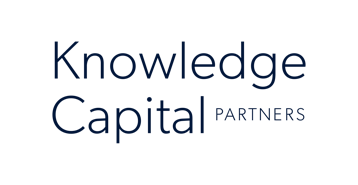One of the biggest impediments on the road to digital transformation is the method used to assess its real cost and its real return. In the majority of companies, the business case is built on old investment evaluation techniques, no longer fit for purpose. Like so much else in realizing the potential of digital technologies, we need to think bigger, outside yesterday’s box.
From research into hundreds of deployments, KCP has developed a more comprehensive and accurate evaluation model. It works right across the progression of RPA and cognitive technologies, to capture the full value of transformation.
In this fast-moving space, arguably no company Board should embark on this journey without this new Total Value of Ownership (TVO) model informing their decisions. Professor Leslie Willcocks and Dr. John Hindle, of Knowledge Capital Partners, set out the case for capturing Total Value of Ownership.
Initial adoption of Robotic Process Automation (RPA) typically starts with efficiency – using new technology to improve accuracy, quality, and speed while reducing costs. And the most common business case metric is some variant of Return on Investment (ROI), with the reference benchmark being the cost of a Full-Time Employee (FTE). But we know from decades of research that traditional ROI measures and cost/benefit analyses typically understate ‘soft’ and strategic benefits when applied to IT investments, and don’t account for many operational, maintenance as well as human and organizational costs, which can exceed technical costs by 300-400%.
One remedy, at least on the cost side, has been to focus on Total Cost of Ownership (TCO), defined as the total technical, project, human and organizational acquisition and operating costs as well costs related to replacement or upgrades at the end of the life cycle. TCO adds up all resource costs across all the activities comprising the automation life-cycle, flushing out hidden costs so often missed when using ROI.
THE MISSING PART
The real limitation so far in automation assessments, however, has been in establishing benefits. Inherited from IT evaluation practice, one tendency has been to understate total costs in order to be able to allocate only hard, financial benefits allowable under traditional ROI or TCO measurement regimes. But this does not lead to gaining strategic value from the technology. The truth is that a new measure of net benefits is needed in order to drive strategic behaviour and gains
Based on extensive research at Knowledge Capital Partners, we have developed a new measurement framework for service automation investments we call Total Value of Ownership (TVO). With this concept, the objective is to ensure that business cases for service automation are driven by:
total costs (both explicit and hidden costs)
multiple expected business benefits, and the strategic returns from future business and technical options made possible by automation (hidden value).
“A new measure of net benefits is needed in order to
drive strategic behaviour and gains.”
THE NEW TVO FRAMEWORK
Our TVO Framework is shown below, with Total Costs on the left hand side of the equation, matched against Total Benefits on the right.
Knowledge Capital Partners © All Rights Reserved
On the cost side we include all relevant activities and resources, not just traditional ROI inputs. On the benefits side, we have already found very strong empirical evidence amongst clients using RPA and intelligent automation to achieve a ‘triple win’ for shareholders, customers and employees. Our “Three E’s” framework – Efficiency, Effectiveness, Enablement - is designed to capture all these, but also locates further hidden value frequently omitted from clients’ business cases.
FINDING HIDDEN VALUE
Much hidden value resides in the potential from applying process analytics for further Efficiency gains. Additional hidden value is located in the Effectiveness area (‘doing things right/differently’) by using automation and analytics to change how business is done, or to extend its capabilities. Meanwhile when we come to Enablement, we have already found multiple examples of enhanced customer journeys, new services, and increased profit/revenue.
“Discounting the source of major hidden, future value is a serious mistake.
”
Furthermore, we need to capture the hidden strategic value of the future options enabled where RPA creates a powerful, low-code digital business platform, operating something like a ‘bus’ on a computer motherboard. But here connecting and integrating a growing range of innovative cognitive and AI workflow solutions to support a blended human and digital workforce – including Natural Language Processing (NLP), Optical Character Recognition (OCR), Machine Learning (ML), and other process-and industry-specific tools. Discounting the source of such major hidden, future value is a serious mistake.
Identifying and capturing these business-driven Effectiveness and Enablement value opportunities requires evolving the initial RPA Center of Excellence – first to become an Automation Center of Excellence, and ultimately to become what we call a Center of Enablement.
KCP is an independent research and advisory firm, expert in helping developers and users to find the right path forward with transformative technologies. If you would like to explore how your organisation can develop a blueprint for Digital Transformation please contact KCP Partner Matt Stanton, mattstanton@knowledgecapitalpartners.com


